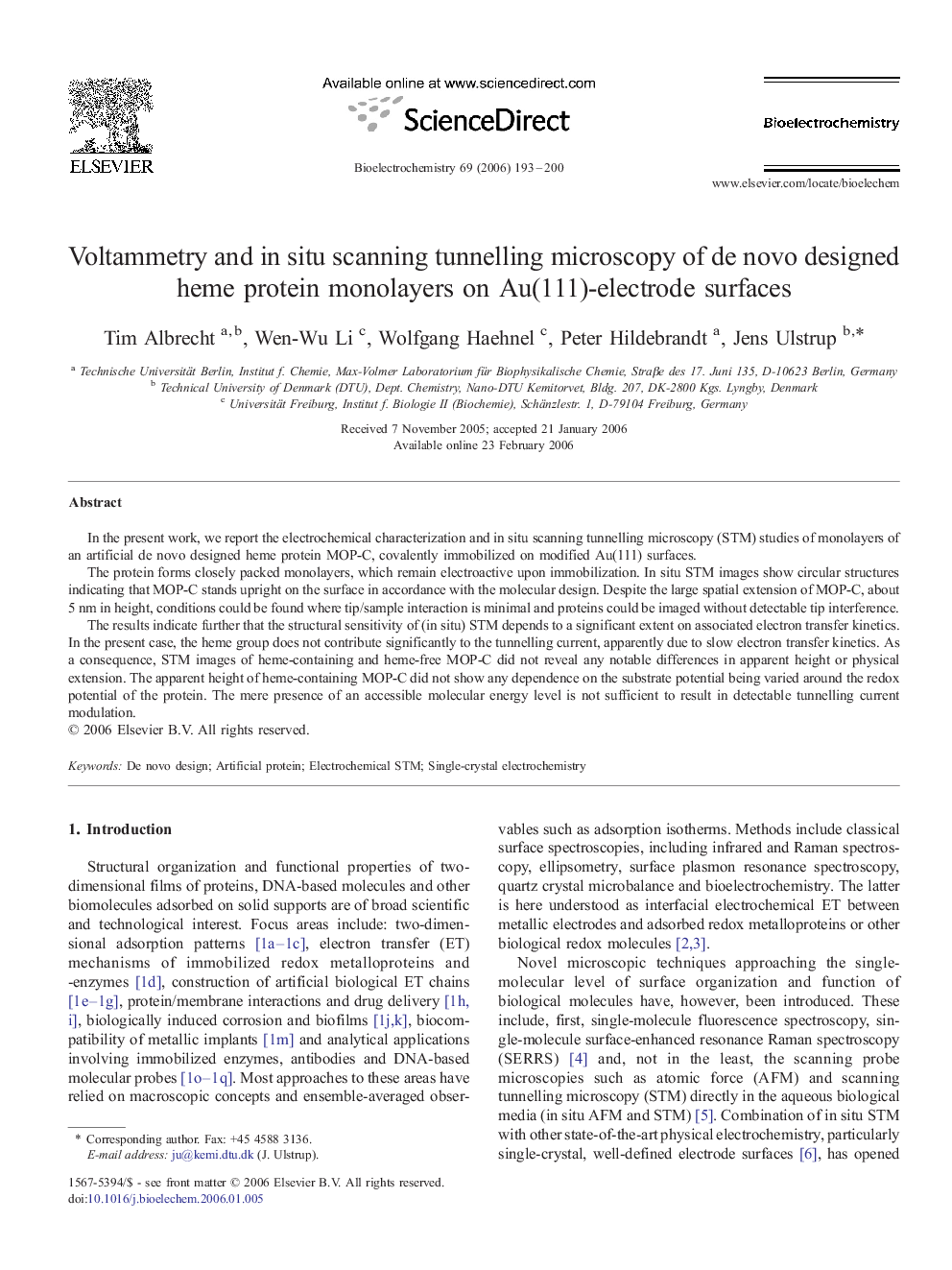| Article ID | Journal | Published Year | Pages | File Type |
|---|---|---|---|---|
| 1269420 | Bioelectrochemistry | 2006 | 8 Pages |
In the present work, we report the electrochemical characterization and in situ scanning tunnelling microscopy (STM) studies of monolayers of an artificial de novo designed heme protein MOP-C, covalently immobilized on modified Au(111) surfaces.The protein forms closely packed monolayers, which remain electroactive upon immobilization. In situ STM images show circular structures indicating that MOP-C stands upright on the surface in accordance with the molecular design. Despite the large spatial extension of MOP-C, about 5 nm in height, conditions could be found where tip/sample interaction is minimal and proteins could be imaged without detectable tip interference.The results indicate further that the structural sensitivity of (in situ) STM depends to a significant extent on associated electron transfer kinetics. In the present case, the heme group does not contribute significantly to the tunnelling current, apparently due to slow electron transfer kinetics. As a consequence, STM images of heme-containing and heme-free MOP-C did not reveal any notable differences in apparent height or physical extension. The apparent height of heme-containing MOP-C did not show any dependence on the substrate potential being varied around the redox potential of the protein. The mere presence of an accessible molecular energy level is not sufficient to result in detectable tunnelling current modulation.
